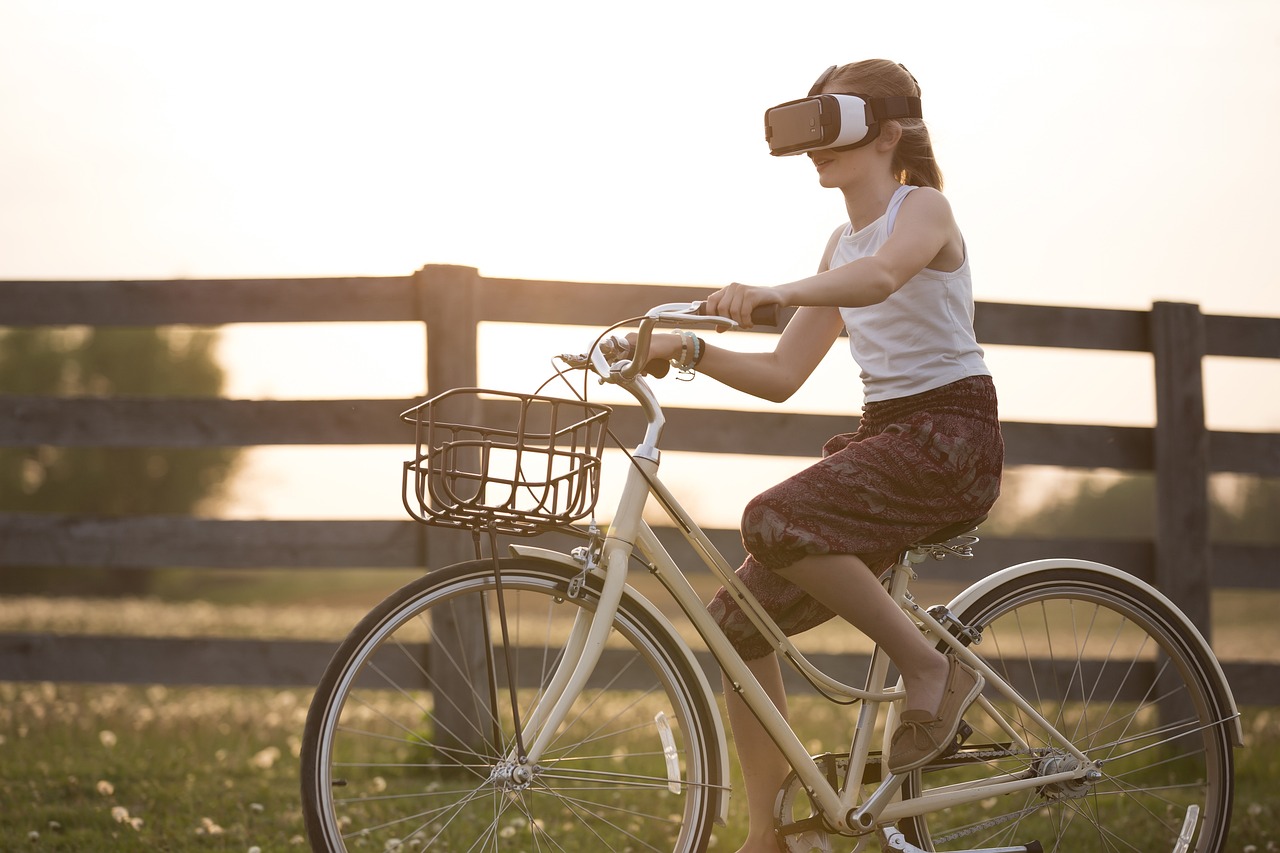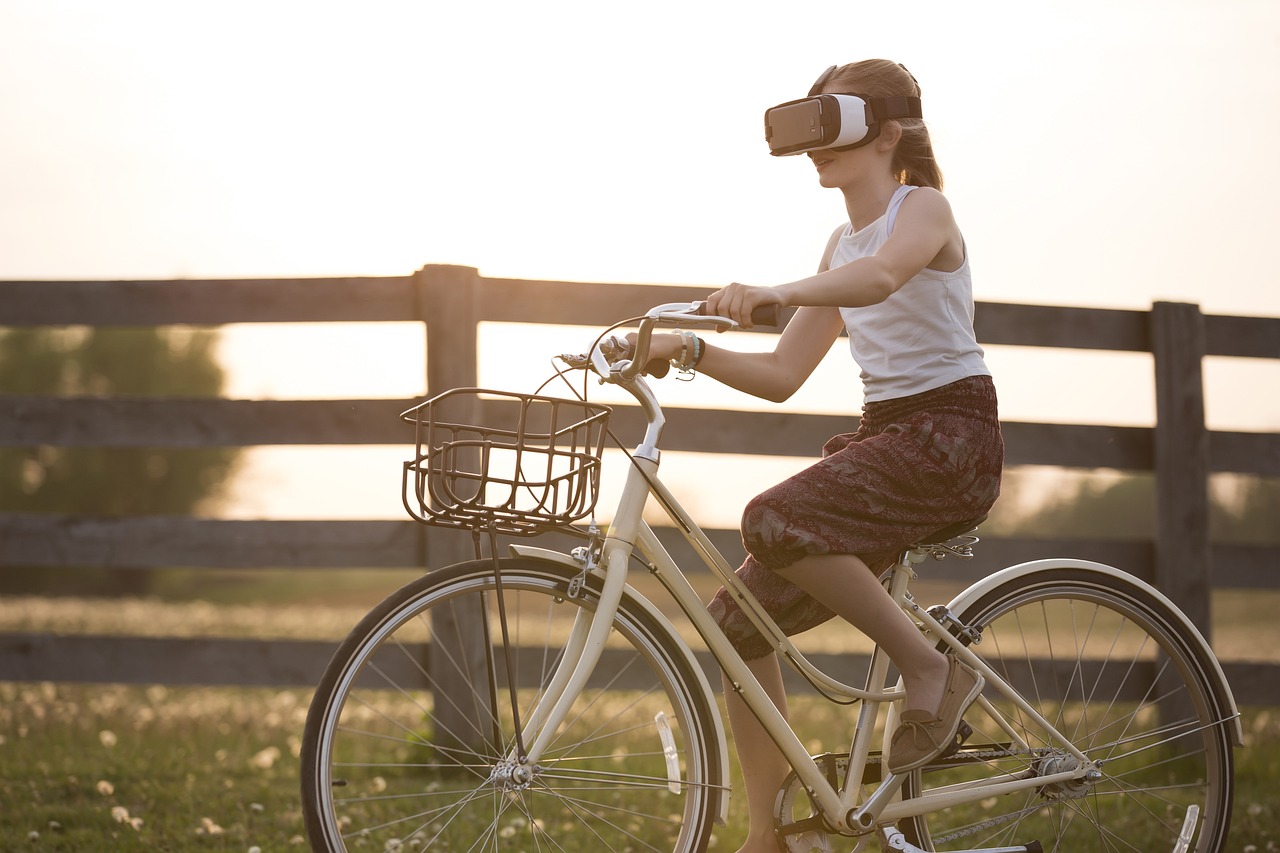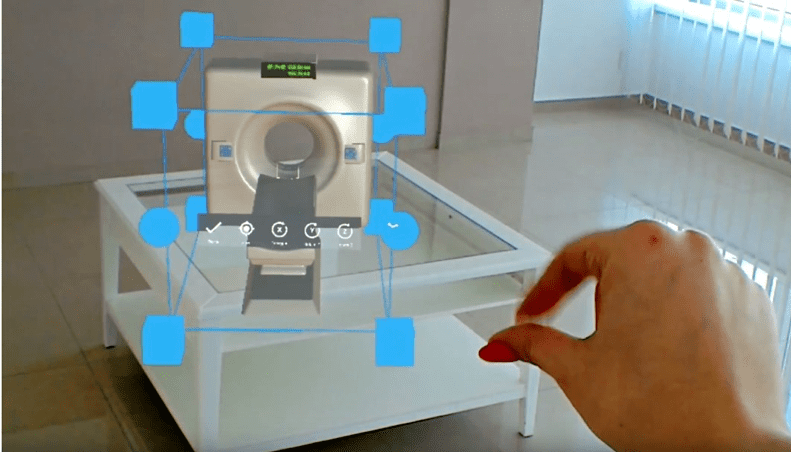Table of Contents
- Traditionally, catalogs served as printed compilations of products, offering customers a visual and textual overview of what a brand had to offer. However, these paper catalogs had limitations
- 360-Degree Product Views
- Embedded Videos
- Live Chat and Customer Support
- Virtual Try-Ons
- AR Product Demonstrations
- AR-Based Games and Experiences
- Enhanced Engagement
- Improved Decision-Making
- Reduced Returns
- Brand Differentiation
The humble catalog, once a static and straightforward marketing tool, has undergone a remarkable transformation in the digital age. Today, innovations in catalog technology have elevated this traditional medium to new heights, infusing it with interactive features and augmented reality (AR) experiences. In this article, we will explore how these innovations are reshaping catalogs and revolutionizing the way customers engage with products and brands.
The transformation of catalogs from static print publications to dynamic digital experiences is a testament to the adaptability of marketing tools in the face of technological advancements. The traditional catalog, once confined to the realm of ink and paper, has embraced the digital age with open arms, offering a plethora of benefits to both businesses and consumers.
1. Beyond Physical Constraints: In the past, catalogs were limited by physical constraints. They could only contain a finite number of pages and product listings. Digital catalogs obliterate these limitations, enabling brands to showcase their entire product range without worrying about space or printing costs. This abundance of choice is a boon for customers seeking variety and options.
2. Real-Time Updates: Digital catalogs are not static entities; they are dynamic and adaptable. Businesses can update product information, prices and availability in real time, ensuring that customers always access the most accurate and current information. This real-time capability aligns with today’s fast-paced consumer expectations.
3. Global Reach: The digital nature of these catalogs means they can reach a global audience instantly. There are no shipping delays and accessibility is not constrained by geographic boundaries. Brands can expand their reach exponentially, catering to a diverse and widespread customer base.
4. Enhanced Customer Engagement: Interactive features and AR experiences are transforming catalogs into engaging shopping destinations. Customers can explore products from every angle, try them on virtually and even interact with gamified content. This level of engagement fosters a deeper connection between customers and brands, enhancing brand loyalty.
5. Measurable Insights: Digital catalogs provide valuable insights into customer behavior. Businesses can track user interactions, such as which products are viewed most, which videos are watched and which AR experiences are popular. These insights inform marketing strategies and product offerings.
6. Sustainable Practices: Going digital is also aligned with sustainability efforts. It reduces the need for paper production, printing and physical distribution, lowering a brand’s environmental footprint. Customers appreciate brands that embrace eco-friendly practices.
7. Adaptability to Mobile Devices: The ubiquity of smartphones and tablets makes digital catalogs highly accessible. Customers can browse catalogs on their preferred devices, whether at home, on the go or in-store. This adaptability ensures that the catalog is always at the customer’s fingertips.
In essence, the evolution of catalogs into digital powerhouses represents a win-win scenario for both businesses and customers. Businesses gain a versatile and cost-effective marketing tool that can reach a global audience, adapt to changing dynamics and offer engaging experiences. Customers benefit from the convenience, real-time information and interactive features that enhance their shopping journeys. This transformation not only modernizes the catalog but also redefines the way brands connect with their audiences in the digital age. It’s a testament to the enduring importance of innovation in marketing and the ability of traditional tools to reinvent themselves for the future.
Don’t stop here; you can continue your exploration by following this link for more details: Why Every Organization Needs an Augmented Reality Strategy
Traditionally, catalogs served as printed compilations of products, offering customers a visual and textual overview of what a brand had to offer. However, these paper catalogs had limitations
they were static, lacked real-time information and couldn’t provide the immersive experiences that consumers have come to expect in the digital era.
In the not-so-distant past, traditional marketing channels and mediums had their limitations. They were static, unable to adapt or convey real-time information and they certainly couldn’t provide the immersive experiences that today’s tech-savvy consumers have come to expect in the digital era.
The static nature of traditional marketing materials, such as print ads or billboards, meant that once they were created and distributed, they remained unchanged until the end of their run. This lack of adaptability meant that if circumstances or consumer preferences shifted, these materials couldn’t respond in real time. In contrast, digital marketing tools and platforms enable marketers to make instant updates, tweak messaging and respond to changing trends or events dynamically.
Real-time information is a hallmark of modern marketing. In today’s fast-paced world, consumers expect to have access to up-to-the-minute data, pricing, availability and news. Traditional mediums simply couldn’t keep pace with this demand for immediacy. Digital marketing, on the other hand, excels in delivering real-time information, enabling brands to communicate the latest updates, product launches or promotions instantaneously.
Immersive experiences have become the gold standard in the digital era. Consumers crave interactive content, augmented reality (AR), virtual reality (VR) and other engaging experiences that captivate their senses. Traditional marketing channels, being primarily one-way communication tools, couldn’t deliver on this front. In contrast, digital platforms allow for interactive and immersive content creation, providing consumers with memorable and engaging brand experiences.
Furthermore, digital marketing offers the advantage of precise targeting and personalization. Brands can tailor their messages and content to individual preferences and behaviors, creating a more meaningful and relevant connection with their audience. Traditional marketing mediums lacked this level of personalization, often delivering generic messages to a broad audience.
In conclusion, while traditional marketing channels had their time and place, they were fundamentally limited in their ability to adapt, provide real-time information and deliver immersive experiences. The digital era has ushered in a new era of marketing that thrives on adaptability, immediacy and interactivity, meeting the evolving expectations of today’s consumers. As technology continues to advance, the possibilities for creating engaging and personalized brand experiences are boundless, reshaping the marketing landscape.
Don’t stop here; you can continue your exploration by following this link for more details: SCAD-Course-Descriptions-info.pdf

360-Degree Product Views
Modern catalogs can now showcase products in 360-degree views. Shoppers can interactively spin and zoom in on items, giving them a detailed and comprehensive understanding of the product’s design and features. This feature is especially valuable for online shoppers who cannot physically inspect products.
The evolution of modern catalogs, with the incorporation of 360-degree product views, has revolutionized the way consumers shop and engage with products. This dynamic feature offers a myriad of benefits, enhancing the online shopping experience in several ways:
Enhanced Product Understanding: 360-degree views provide shoppers with an immersive and holistic understanding of a product. Rather than relying solely on static images, consumers can interactively explore every angle, allowing them to assess the product’s design, texture and functionality with a level of detail that rivals an in-store experience.
Increased Confidence: When shoppers can virtually inspect a product from all angles, they gain confidence in their purchasing decisions. This transparency helps mitigate uncertainty and reduces the likelihood of returns or buyer’s remorse, ultimately boosting customer satisfaction.
Better Informed Choices: Interactivity extends beyond rotating the product; it often includes zooming in on specific features. This enables consumers to closely examine intricate details, ensuring that the product aligns with their specific needs and preferences. Informed choices lead to happier customers.
Reduced Returns: The ability to view products comprehensively can significantly reduce the rate of returns. When shoppers have a clear understanding of what they’re buying, they are less likely to be disappointed upon receipt, resulting in cost savings for businesses and improved customer retention.
Time and Convenience: For online shoppers, 360-degree views save time and add convenience. Instead of relying on written descriptions alone, customers can quickly determine if a product meets their expectations, reducing the need for extensive research or inquiries.
Competitive Advantage: Businesses that offer 360-degree product views gain a competitive edge. This feature sets them apart in a crowded online marketplace, signaling a commitment to transparency and customer satisfaction. It can also attract tech-savvy shoppers who value the latest in online shopping experiences.
Product Showcase: 360-degree views are particularly valuable for products with intricate designs, fine craftsmanship or unique features. It allows businesses to showcase their products in a way that static images or descriptions cannot fully capture, potentially increasing sales for such items.
Compatibility with Augmented Reality (AR): The rise of AR technology further enhances the value of 360-degree views. Some businesses are integrating AR apps that allow customers to virtually place products in their real-world environments, creating an even more immersive shopping experience.
Cross-Selling and Upselling: When shoppers engage with products in a detailed manner, it opens opportunities for cross-selling and upselling. For example, they may notice complementary items or higher-tier versions, increasing the average order value.
User Engagement and Retention: Incorporating interactive elements like 360-degree views can enhance user engagement and encourage visitors to spend more time on your website. This increased engagement can contribute to improved customer retention and loyalty.
In conclusion, 360-degree product views represent a powerful tool in the modern catalog’s arsenal. They transcend traditional static images, offering online shoppers an engaging and informative experience that mirrors the advantages of in-person shopping. By providing customers with comprehensive insights into products, businesses can enhance trust, satisfaction and ultimately, their bottom line in the ever-evolving landscape of e-commerce.
To delve further into this matter, we encourage you to check out the additional resources provided here: Where a 360 Product Viewer Fits Into the Buyer’s Journey

Embedded Videos
Video integration has become a staple in catalogs. Brands can include videos demonstrating product use, benefits and testimonials. These videos provide a richer context for products, helping customers make informed choices.
The integration of video into catalogs has evolved into a fundamental strategy for brands seeking to engage and educate their customers in a more immersive way. This multimedia approach transcends the static confines of traditional catalogs, offering a multitude of benefits that enrich the shopping experience and foster informed decision-making. Here’s an extended exploration of this idea:
Visual Storytelling: Videos in catalogs are potent tools for visual storytelling. They allow brands to narrate compelling stories about their products, showcasing how they fit into customers’ lives and addressing pain points. Whether it’s demonstrating the ease of use, illustrating real-world applications or sharing behind-the-scenes insights, videos can captivate and resonate with viewers on a personal level.
Interactive Learning: Beyond static images and descriptions, videos enable interactive learning. Customers can see products in action, explore their features and gain a deeper understanding of how these items can solve their specific needs or enhance their lifestyles. This hands-on experience reduces uncertainty and encourages confidence in purchasing decisions.
Humanizing the Brand: Testimonial videos featuring satisfied customers or brand ambassadors can humanize the brand. Real people sharing their experiences and endorsements add authenticity and credibility. These authentic voices can build trust and strengthen the emotional connection between the brand and its audience.
Clarifying Complex Products: For products with intricate features or functionalities, videos are invaluable. They simplify complex information and make it more digestible. Customers can follow step-by-step guides, troubleshooting tips or tutorials, empowering them to make the most of their purchases.
Visual Product Comparisons: Videos can facilitate product comparisons more effectively than static images or text. Brands can create side-by-side comparison videos, highlighting the differences and advantages of similar products. This helps customers weigh their options and select the best fit for their needs.
Leveraging User-Generated Content: Brands can encourage customers to create and share their own videos showcasing how they use the products. This user-generated content not only serves as authentic testimonials but also fosters a sense of community and participation around the brand.
Measuring Engagement: With the integration of video, brands can gather valuable data on customer engagement. Analytics can track which videos are watched the most, how long viewers spend watching and where they drop off. This data helps brands refine their catalog content and tailor future videos to meet customer preferences.
Multichannel Synergy: Videos in catalogs can be seamlessly integrated with a brand’s broader multichannel marketing strategy. The same videos featured in the catalog can be shared on social media, embedded in email campaigns and showcased on the brand’s website. This consistency reinforces the brand message across all touchpoints.
Adapting to Digital-First Audiences: In an age of digital natives, video content is the preferred medium for many consumers. By incorporating videos into catalogs, brands align with the preferences of modern, tech-savvy audiences, increasing the likelihood of engagement and conversion.
In conclusion, the integration of videos in catalogs represents a dynamic shift in the way brands communicate with and engage their customers. It offers a multifaceted approach to product presentation, leveraging the power of storytelling, interactivity and authenticity. As technology continues to advance, the role of video in catalogs is set to grow, providing brands with an innovative means of connecting with their audience and facilitating more informed purchasing decisions.
You can also read more about this here: Reimagining the Role of Technology in Education:

Live Chat and Customer Support
Some digital catalogs offer live chat or customer support options. Shoppers can instantly connect with a representative for product inquiries or assistance, replicating the in-store shopping experience.
In the dynamic landscape of digital commerce, providing exceptional customer support is paramount and some digital catalogs are taking innovative steps to bridge the gap between online shopping and the in-store experience. Here’s a deeper look at how live chat and customer support options in digital catalogs are reshaping the way consumers interact with brands:
Instant Access to Information: Live chat and customer support options bring the immediacy of in-store assistance to the online realm. Shoppers no longer need to navigate extensive FAQs or send emails and wait for responses. With just a few clicks, they can connect with a knowledgeable representative who can provide instant answers to their questions or guide them through the product selection process.
Personalized Guidance: Live chat enables personalized interactions that mimic the one-on-one assistance shoppers receive in physical stores. Representatives can offer tailored product recommendations based on the customer’s preferences and needs, creating a more engaging and satisfying shopping experience.
Enhanced Convenience: For consumers, live chat is the epitome of convenience. They can seek assistance from the comfort of their own homes, at any time of day or night. This around-the-clock availability is a significant advantage, especially for busy individuals who may prefer to shop outside of regular business hours.
Reduced Cart Abandonment: Live chat can act as a powerful tool to combat cart abandonment, a common challenge in e-commerce. When customers encounter issues or have questions during the checkout process, immediate assistance can help them resolve these concerns and complete their purchase, ultimately boosting conversion rates.
Real-Time Problem Solving: Customers appreciate the ability to address issues in real-time. Whether it’s troubleshooting technical difficulties, clarifying product specifications or resolving billing inquiries, live chat provides a direct channel for quick problem-solving.
Building Trust: Live chat fosters trust between customers and brands. The availability of real-time support signals that the company is attentive to customer needs and committed to providing a positive shopping experience. This trust can translate into increased customer loyalty and repeat business.
Multi-Channel Engagement: Some digital catalogs take it a step further by integrating live chat across multiple channels, including mobile apps and social media platforms. This ensures that customers can access support wherever they engage with the brand, creating a seamless and consistent experience.
Data Collection and Insights: Live chat interactions generate valuable data and insights that businesses can leverage for ongoing improvement. Customer inquiries and feedback provide a window into common pain points and opportunities for enhancement, enabling brands to fine-tune their offerings and service.
Scalability and Efficiency: With the assistance of chatbots and automated responses, businesses can efficiently handle a high volume of inquiries, ensuring that customers don’t experience long wait times. This scalability allows brands to offer prompt support during peak shopping seasons or special promotions.
In conclusion, live chat and customer support options in digital catalogs are instrumental in replicating the in-store shopping experience in the online realm. They empower businesses to provide immediate, personalized assistance, foster trust, reduce cart abandonment and gather valuable insights—all of which contribute to an elevated shopping journey and increased customer satisfaction. As these technologies continue to evolve, they are poised to play an even more central role in the future of e-commerce.
Looking for more insights? You’ll find them right here in our extended coverage: Economic potential of generative AI | McKinsey

Virtual Try-Ons
AR allows customers to virtually try on products like clothing, accessories or cosmetics. By overlaying the product on their own image, shoppers can assess how an item fits and looks on them without physically trying it on. This feature reduces uncertainty and returns, enhancing the online shopping experience.
Augmented Reality (AR) technology is revolutionizing the way consumers shop online and its impact extends far beyond merely trying on clothes or accessories virtually. Here’s a broader exploration of how AR is reshaping the online shopping landscape:
1. Expanding Product Try-Ons: AR isn’t limited to fashion; it’s also transforming the way customers interact with other products. For instance, furniture retailers are using AR to allow customers to visualize how a new sofa or coffee table would look in their living room. This extends to home decor, appliances and even automobiles. The ability to “try before you buy” virtually significantly enhances consumer confidence and reduces the need for returns.
2. Customization and Personalization: AR can facilitate product customization. Customers can personalize items like sneakers, jewelry or electronics by changing colors, materials and features in real-time through AR interfaces. This level of personalization not only meets individual preferences but also adds an element of creativity to the shopping experience, making it more engaging and satisfying.
3. Showcasing Product Features: Beyond aesthetics, AR can help customers understand the functionality of products. For instance, when shopping for electronics, customers can use AR to see how a smart home device interacts with their environment or how a camera’s settings work. This educational aspect of AR empowers consumers to make informed decisions and choose products that align with their needs.
4. Bridging the Gap Between Online and Offline Shopping: AR bridges the gap between online and offline retail experiences. Customers can visit a physical store, scan products with their mobile devices and access additional information or virtual try-ons right in the store. Conversely, they can shop online and experience products as if they were in a physical store, creating a seamless and holistic shopping journey.
5. Enhanced Brand Engagement: Brands that embrace AR technology stand out and demonstrate innovation. Interactive AR experiences can be used for marketing campaigns, creating buzz and fostering brand loyalty. Customers enjoy the novelty of AR and are more likely to engage with brands that offer unique and immersive experiences.
6. Reducing Environmental Impact: By enabling customers to make more informed choices and minimizing returns, AR contributes to sustainability efforts. Fewer returned items mean reduced transportation and packaging waste, aligning with the growing concern for eco-friendly shopping practices.
7. Inclusivity and Accessibility: AR can cater to diverse audiences. It helps customers with disabilities gain a better understanding of products, whether it’s through visualizing clothing designs, understanding electronic interfaces or exploring architectural spaces. This inclusivity enhances accessibility in the online shopping world.
8. Data Insights and Customer Behavior: AR applications collect valuable data on customer behavior and preferences. Retailers can gain insights into which products customers try on most frequently, how long they spend exploring virtual features and even which combinations are most popular. This data informs inventory management and marketing strategies.
In conclusion, Augmented Reality has transcended the realm of novelty and become a transformative force in the world of online shopping. Its applications are wide-ranging, from improving product try-ons to personalization, education and environmental sustainability. As AR technology continues to evolve, it promises to redefine the very essence of the online shopping experience, making it not only more convenient but also more immersive and engaging for consumers worldwide.
If you’d like to dive deeper into this subject, there’s more to discover on this page: A model of acceptance of augmented-reality interactive technology …

AR Product Demonstrations
Brands can use AR to create interactive product demonstrations. For example, a furniture retailer can allow customers to visualize how a piece of furniture would look in their living room using their smartphone’s camera and AR technology.
The integration of Augmented Reality (AR) into marketing strategies offers brands an exciting avenue for engaging customers through interactive product demonstrations. This innovative approach has the potential to revolutionize the way consumers shop and here’s a deeper exploration of this concept:
Enhanced Shopping Experience: AR takes the traditional shopping experience to the next level by providing customers with an immersive and personalized encounter. Imagine stepping into a virtual showroom where you can try on clothing, place furniture in your home or even test out makeup products, all from the comfort of your own space. This level of interactivity enhances the shopping experience, making it more enjoyable and informative.
Visualizing Products in Real Contexts: One of AR’s standout features is its ability to place virtual objects seamlessly into the real world. Brands can harness this capability to help customers visualize products in their own environments. For instance, a home decor retailer can enable customers to position virtual furniture pieces in their living rooms, allowing them to see how each item complements their existing decor. This feature not only builds confidence in purchase decisions but also reduces the likelihood of post-purchase regrets.
Reducing Uncertainty: Shopping often involves uncertainty, especially when purchasing items with significant aesthetic or functional implications. AR-based demonstrations empower consumers by giving them a clear understanding of how a product will fit into their lives. Whether it’s the fit of clothing, the look of a new appliance in the kitchen or the feel of a sofa in the living room, AR helps eliminate guesswork and ensures a more informed decision-making process.
Engaging Storytelling: AR also enables brands to craft engaging narratives around their products. Interactive demonstrations can showcase a product’s features, benefits and use cases in a dynamic and memorable way. This storytelling approach not only educates consumers but also forges a deeper emotional connection with the brand.
Virtual Try-Before-You-Buy: For industries like fashion and cosmetics, AR-powered try-before-you-buy experiences are game-changers. Customers can virtually try on clothing, experiment with makeup shades or test hairstyles. This functionality not only saves time but also increases the confidence of customers in their purchase choices.
Data-Driven Insights: AR-based demonstrations can collect valuable data on customer interactions and preferences. Brands can gain insights into which products are most popular, how customers engage with virtual try-ons and even which styles or colors resonate the most. This data can inform inventory decisions, marketing strategies and product development.
In essence, AR-driven interactive product demonstrations bring the showroom experience to customers’ fingertips, breaking down barriers to online shopping and enhancing the overall shopping journey. As technology continues to advance, brands that embrace AR in their marketing strategies can not only differentiate themselves but also provide customers with a more enjoyable, informative and confidence-building shopping experience. It’s a win-win for both brands and consumers alike.
To expand your knowledge on this subject, make sure to read on at this location: 8 Innovative Ways To Use AR/VR Technologies In Online Training …

AR-Based Games and Experiences
Some catalogs incorporate gamified AR experiences. Customers can engage with the catalog through interactive games or challenges, making the shopping process more enjoyable and memorable.
Incorporating gamified augmented reality (AR) experiences into catalogs represents a brilliant fusion of technology and shopping that goes beyond the ordinary. These immersive experiences not only transform the way we interact with catalogs but also elevate the entire shopping process into something truly unforgettable.
Imagine flipping through the pages of a catalog and suddenly finding yourself in a virtual treasure hunt, searching for hidden discounts or exclusive offers. Gamified AR experiences can turn every page into an adventure, where customers embark on quests, solve puzzles or compete with friends to uncover special deals. This dynamic engagement doesn’t just make shopping enjoyable; it turns it into an event.
Furthermore, these interactive challenges not only entertain but also educate. Catalogs can incorporate AR games that teach customers about product features, benefits and uses in a fun and interactive manner. This not only enhances the shopping experience but also empowers customers with valuable knowledge about the products they’re considering.
The interactive nature of gamified AR experiences fosters a sense of connection between customers and brands. It’s not just about purchasing a product; it’s about being part of an exciting journey, one that leaves a lasting impression. Customers are more likely to remember and return to brands that offer such unique and enjoyable experiences.
Moreover, the gamification of catalogs can extend beyond the digital realm. For instance, customers might be enticed to visit physical stores by completing challenges in the catalog, creating a bridge between online and offline retail. This seamless integration enriches the overall shopping ecosystem, making it more versatile and customer-centric.
In summary, catalogs that integrate gamified AR experiences redefine the shopping experience, blending entertainment, education and engagement. They create memorable moments and strengthen the bond between customers and brands. As the digital and physical shopping worlds continue to converge, gamified AR catalogs are poised to lead the way, offering an exciting glimpse into the future of retail.
For a comprehensive look at this subject, we invite you to read more on this dedicated page: Augmented reality in medical education: students’ experiences and …

Enhanced Engagement
Interactive features and AR captivate customers’ attention, increasing engagement and time spent with the catalog. Shoppers are more likely to explore a dynamic catalog thoroughly.
The incorporation of interactive features and augmented reality (AR) technology into catalogs has revolutionized the way customers engage with this traditionally static medium. This shift towards interactivity not only captivates customers’ attention but also leads to a more immersive and engaging shopping experience. Here’s an in-depth exploration of how interactive features and AR captivate customers and enhance their interaction with catalogs:
Immersive Exploration: Interactive features and AR transform catalogs from mere pages of products into immersive experiences. With AR, customers can use their smartphones or tablets to superimpose 3D models of products into their real-world environment. This capability allows them to see how furniture fits in their living room or how clothing looks on them. Such immersive exploration piques curiosity and encourages customers to spend more time engaging with the catalog.
Visual Engagement: Interactivity and AR provide a visual appeal that traditional catalogs can’t match. Customers are drawn to the dynamic and visually captivating elements, such as 360-degree product views, interactive product demonstrations or the ability to change product colors and styles in real-time. These visual experiences increase engagement and encourage customers to interact more extensively with the catalog.
Personalization: Interactive catalogs often allow customers to personalize their experience. They can customize products by selecting options like size, color or configuration, creating a sense of ownership and attachment to the products they’re exploring. Personalization enhances the feeling that the catalog is tailored to their preferences.
Educational Value: Interactive features can serve an educational purpose by providing in-depth product information, how-to guides or video tutorials. Customers benefit from a deeper understanding of the products, making them more confident in their purchasing decisions.
Entertainment Factor: Interactivity adds an element of entertainment to the shopping experience. Gamified features, interactive quizzes or virtual try-ons turn catalog exploration into an enjoyable and engaging activity. Customers are more likely to spend time on a catalog that entertains them.
Reduced Bounce Rate: An engaging and interactive catalog reduces the bounce rate, which is the percentage of visitors who leave a website or catalog without exploring further. When customers are captivated by interactive elements, they are less likely to leave prematurely.
Shareability: Customers are more inclined to share their exciting catalog experiences with friends and family. This word-of-mouth sharing can extend the catalog’s reach and attract new customers who are curious about the interactive features.
Conversion Opportunities: Interactive catalogs often integrate seamless purchasing options. When customers are engaged and excited about a product, they can make a purchase directly within the catalog. This reduces friction in the buying process and increases conversion rates.
Tracking and Analytics: Interactive catalogs provide valuable data on customer interactions. Businesses can track which products or features are the most engaging and use this data to refine their catalog content and marketing strategies.
Competitive Advantage: In a crowded market, offering an interactive catalog can set a brand apart from competitors. It demonstrates a commitment to innovation and customer-centricity, which can positively influence brand perception.
In summary, interactive features and AR technology have redefined the catalog experience by captivating customers’ attention and increasing their engagement. By offering immersive exploration, visual appeal, personalization, education, entertainment and other benefits, interactive catalogs create a win-win scenario for both customers and businesses. Customers enjoy a more enjoyable and informative shopping journey, while businesses benefit from increased engagement, reduced bounce rates and improved conversion opportunities. As technology continues to evolve, the potential for even more captivating and interactive catalog experiences is boundless.
Explore this link for a more extensive examination of the topic: Revive Your Catalog Marketing with Tech | USPS Delivers

Improved Decision-Making
These technologies provide customers with more information and a deeper understanding of products, aiding in their decision-making process. Customers can make more confident purchasing decisions.
The integration of advanced technologies in the retail landscape, such as augmented reality (AR), virtual reality (VR) and interactive product visualization, marks a transformative shift in the way customers engage with products and make purchasing decisions. Here’s a comprehensive look at how these technologies empower customers and enhance their confidence in the decision-making process:
1. Immersive Product Exploration: Augmented reality and virtual reality technologies enable customers to step into immersive digital environments where they can explore products in unprecedented detail. Whether trying on clothing virtually, visualizing furniture in their living space or examining the intricate details of a gadget, these immersive experiences offer a level of interaction that traditional shopping cannot match.
2. Realistic Simulations: AR and VR simulations provide customers with highly realistic depictions of products, reducing uncertainty and doubt. Customers can see how a piece of clothing fits and moves, how a piece of furniture complements their existing decor or how a vehicle performs under different conditions. This realism translates into increased confidence when considering a purchase.
3. Visualizing Customizations: Interactive product visualization allows customers to customize products to their preferences. They can experiment with different colors, features or configurations in real time. This not only helps customers envision the final product but also ensures that they are making choices aligned with their personal tastes and needs.
4. Informed Decision-Making: Access to detailed product information, specifications and reviews within these technologies empowers customers to make informed decisions. They can quickly access a wealth of knowledge right at their fingertips, reducing the need for extensive external research and facilitating confident choices.
5. Try-Before-You-Buy: AR and VR technologies enable customers to virtually try products before committing to a purchase. For example, they can “try on” makeup, experiment with hairstyles or test out home decor ideas. This virtual try-before-you-buy approach minimizes the risk of post-purchase dissatisfaction.
6. Enhanced Interactivity: These technologies encourage a dynamic, two-way interaction between customers and products. Customers can ask questions, seek assistance and receive real-time feedback or recommendations, fostering a sense of personalized service that enhances confidence in their choices.
7. Reduced Return Rates: By providing customers with a more accurate representation of products, these technologies can help reduce return rates. Customers are less likely to be disappointed with their purchases, as they have a clearer understanding of what to expect.
8. Empowering Complex Purchases: For high-consideration purchases, such as electronics or furniture, AR and VR experiences can be particularly transformative. Customers can delve deep into product features, compare options and visualize how the product fits into their lives, all of which contribute to greater confidence in their decision.
9. Bridging the Online-Offline Gap: AR and VR also play a crucial role in bridging the gap between online and offline shopping. Customers can use these technologies to make more informed decisions online and then confidently visit physical stores to make their purchases.
In summary, technologies like augmented reality, virtual reality and interactive product visualization are revolutionizing the customer decision-making process. By offering immersive experiences, customization options and access to rich product information, these technologies empower customers to make confident, well-informed purchasing decisions. As they become more widely adopted, they are poised to redefine the retail landscape, providing a customer-centric approach that prioritizes informed choices and overall satisfaction.
To delve further into this matter, we encourage you to check out the additional resources provided here: Enhancing the online decision-making process by using augmented …

Reduced Returns
AR features like virtual try-ons help customers visualize products accurately, reducing the likelihood of dissatisfaction and returns. This benefits both customers and businesses.
The integration of Augmented Reality (AR) features, particularly virtual try-ons, represents a pivotal advancement in the world of e-commerce, delivering substantial benefits to both customers and businesses. Let’s delve deeper into how these features enhance the shopping experience and contribute to a more efficient and profitable landscape:
Enhanced Product Understanding: Virtual try-ons provide customers with a highly accurate representation of how a product will look or fit in real life. Whether it’s trying on clothing, testing out makeup or seeing how furniture fits in their space, customers gain a clearer understanding of the product’s features and suitability. This level of product comprehension reduces uncertainty and enhances purchase confidence.
Reduced Disappointment and Returns: One of the most significant advantages of AR-based virtual try-ons is their ability to minimize post-purchase disappointment. By allowing customers to virtually experience a product before buying, businesses significantly reduce the likelihood of returns due to mismatched expectations. This not only saves time and resources for both customers and businesses but also contributes to a more sustainable and eco-friendly retail ecosystem.
Customer Satisfaction: Satisfied customers are more likely to become repeat customers and brand advocates. AR-enhanced shopping experiences that accurately reflect reality contribute to higher levels of customer satisfaction. These customers are more likely to recommend the brand to others and foster a positive reputation through word-of-mouth and online reviews.
Conversion Rate Optimization: AR features act as powerful conversion rate optimization tools. By providing a more engaging and informative shopping experience, businesses can boost their conversion rates. When customers can visualize themselves using or wearing a product, they are more inclined to make a purchase.
Data-Driven Insights: AR platforms often collect valuable data on customer interactions and preferences. Businesses can leverage this data to gain insights into customer behavior, such as which products are tried on most frequently or which styles are preferred. This information informs inventory management, product development and marketing strategies.
Competitive Advantage: Embracing AR in e-commerce provides a competitive edge in a crowded market. Brands that offer virtual try-on experiences demonstrate a commitment to innovation and customer-centricity, which can set them apart from competitors and attract a tech-savvy audience.
Cost Savings: Reducing returns through AR features leads to cost savings for businesses. Returns come with logistical and operational expenses, including restocking, shipping and potential product damage. By minimizing returns, businesses can allocate resources more efficiently.
Global Accessibility: Virtual try-on experiences transcend geographical boundaries, making products accessible to a global audience. Customers can explore and try on items from the comfort of their homes, eliminating the need to visit physical stores or showrooms. This global reach expands market potential and opens doors to international sales.
Continuous Innovation: The development and integration of AR features in e-commerce are ongoing processes. Businesses that invest in these technologies position themselves to adapt and innovate in response to evolving customer preferences and technological advancements.
In summary, AR features like virtual try-ons revolutionize the e-commerce landscape by enhancing product visualization, reducing returns and ultimately benefiting both customers and businesses. As this technology continues to evolve and become more accessible, it promises to shape the future of online shopping and redefine the standards for customer satisfaction and engagement.
To expand your knowledge on this subject, make sure to read on at this location: CHARIOT Program – Stanford Medicine Children’s Health

Brand Differentiation
Brands that embrace these innovations stand out in a competitive market. Innovative catalogs enhance a brand’s image as forward-thinking and customer-centric.
Brands that embrace these innovations stand out in a competitive market. Innovative catalogs enhance a brand’s image as forward-thinking and customer-centric, setting them apart from the crowd and redefining the way they connect with their audience.
In a world where consumers are bombarded with marketing messages from all directions, standing out is a formidable challenge. Innovative catalogs provide a refreshing break from the monotony, capturing attention through their creative use of technology, design and storytelling. By embracing the latest trends in catalog design and presentation, brands not only capture the interest of their audience but also position themselves as leaders in their industry.
One of the key advantages of innovative catalogs is their ability to showcase products and services in a new light. Whether through immersive augmented reality experiences, interactive videos or 3D modeling, these catalogs can transform ordinary products into captivating stories. They allow customers to visualize and interact with items in ways that traditional catalogs cannot, making the purchasing decision more informed and engaging.
Furthermore, innovative catalogs often incorporate personalized elements that cater to the unique preferences and behaviors of individual customers. This level of personalization goes beyond simply addressing the recipient by name; it involves recommending products based on past purchases, browsing history and demographic data. By doing so, brands create a sense of connection and understanding that fosters customer loyalty.
Beyond aesthetics and personalization, these innovative catalogs also demonstrate a commitment to convenience and accessibility. With features like one-click purchasing, integrated QR codes or direct links to online stores, they bridge the gap between the physical and digital shopping experience. Customers can seamlessly transition from browsing a beautifully designed catalog to making a purchase, enhancing their overall shopping journey.
The impact of innovative catalogs extends beyond the immediate sale. They encourage customer engagement, stimulate curiosity and leave a lasting impression. As customers share their positive experiences with these cutting-edge catalogs, they become brand advocates, helping to amplify the brand’s reach and influence in the market.
In summary, embracing innovation in catalog design and presentation is not just a means to showcase products; it’s a strategic move that positions a brand as forward-thinking and customer-centric. By adopting the latest technologies and personalization techniques, brands can captivate their audience, enhance the shopping experience and foster long-term customer relationships. In the competitive landscape of today’s market, these innovative catalogs are a powerful tool for brands looking to not only stand out but also thrive.
Explore this link for a more extensive examination of the topic: 19 Crimes Uses Augmented Reality to Differentiate Their Brand …

Innovations in catalog technology have breathed new life into a traditional marketing tool. Interactive features and augmented reality experiences transform catalogs from static listings of products into dynamic, engaging and informative resources. Customers benefit from enhanced engagement, improved decision-making and reduced uncertainty, while businesses gain a competitive edge and a means to showcase their products in more compelling ways.
As technology continues to advance, we can expect catalogs to evolve even further, providing increasingly immersive and interactive shopping experiences that bridge the gap between the physical and digital worlds. In this ever-changing landscape, catalogs remain a powerful tool for brands to connect with their customers and provide them with memorable, engaging and informative shopping experiences.
You can also read more about this here: Augmented Reality Applications in Education: Teachers Point of View
More links
To delve further into this matter, we encourage you to check out the additional resources provided here: Why Every Organization Needs an Augmented Reality Strategy
